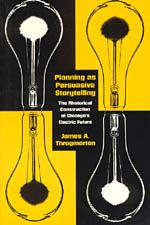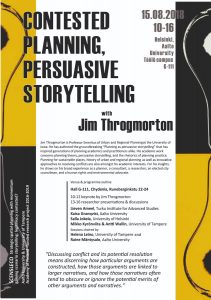Speaking today (22.8.18) at Aboagora on Palimpsest Cities and the concept of burden in city literature.
Many thanks to Silja Laine and everyone at Aboagora for putting together our session and the rest of the excellent program!
I will be speaking a bit about commodity fetishism, the city as juggernaut, and the possibility of redemption in city literature, from The Great Gatsby to Riku Korhonen’s Kahden ja yhden yön tarinoita. Most of our session will be an open discussion with Jason Finch from Åbo Akademi, the Estonian author Jan Kaus, and myself.
I had the honour to meet Jan Kaus during an Association for Literary Urban Studies symposium in Tallinn – Jan Kaus is not only an inspiring literary author, he also has the rare gift to speak both eloquently and poetically about his own literary work and its relationship to cities.
Palimpsest cities: The past as burden and possibility in city literature
Lieven Ameel
Jason Finch
Jan Kaus
Every city carries the traces of its multiple pasts. Some of these are present on the surface in ruins or historic buildings which are visited by tourists. Some are hidden beneath newer buildings or revised road layouts. In this session two scholars of urban literature meet a creative writer preoccupied with his native city to discuss various aspects of burden and possibility in urban place. We approach the theme of this year’s Aboagora through the concept of palimpsest.
Originating in manuscript studies, the word palimpsest has a primary sense defined by the Oxford English Dictionary as ‘a parchment or other writing surface on which the original text has been effaced or partially erased, and then overwritten by another; a manuscript in which later writing has been superimposed on earlier (effaced) writing’. In extended use, palimpsest means something ‘reused or altered while still retaining traces of its earlier form; a multilayered record’. In common with other writers and researchers, we see cities as sites containing many layers and retaining aspects of ‘earlier form’: as palimpsests.
The urban past contains multiple types of burden and possibility and we will introduce literary explorations of specific examples: Tallinn, Turku, and New York. The burden of the urban past can include the effort to comprehend past injustices or crimes, and acts that now seem shameful or unacceptable. The possibility this contains is a new ‘multilayered’ history that can include elements of conflict or radical change.



